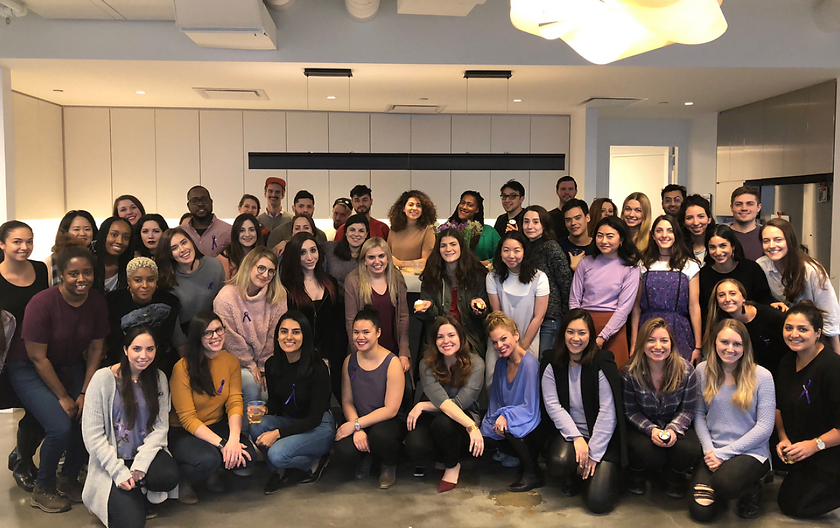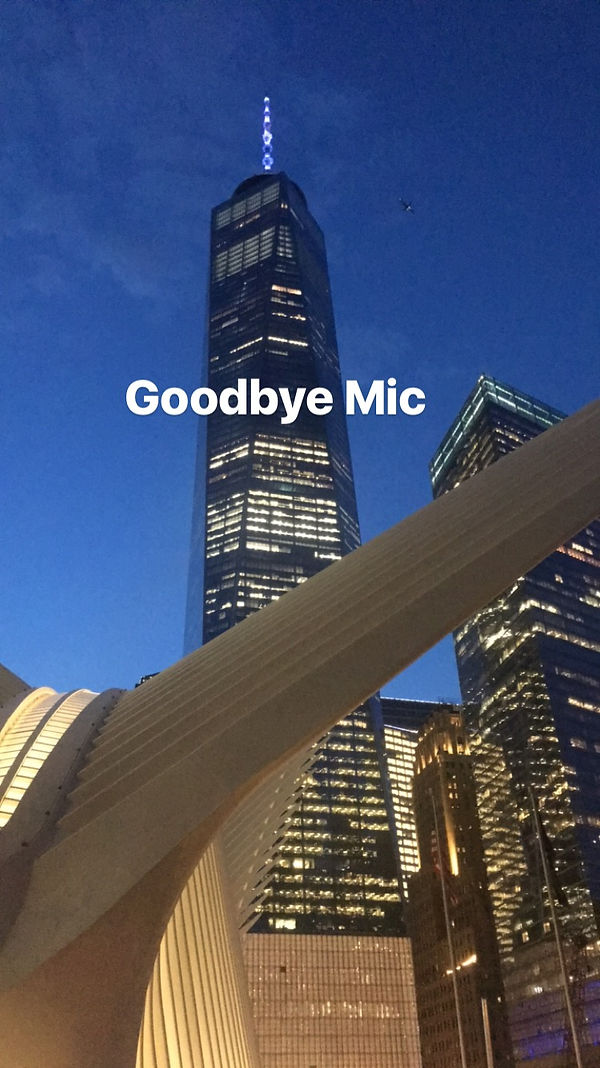
MIC DROP - Editing video journalism for a hungry and growing audience
Lily Oppenheimer - Video Editor, Mic
A brief history
Mic was founded in 2011 by Chris Altchek and Jake Horowitz - both wanted to focus their news startup on underrepresented stories, diverse perspectives and delivering journalism through innovative online platforms. Mic is a privately held, venture-backed, for-profit media company. Headquarters are in One World Trade Center, New York City, with teams stationed in San Francisco, Los Angeles, Chicago, Toronto, Kiev and Stockholm. The Mic Vantage team is Mic's branded content platform, where the video production team has worked recently with REI, Brita and public figures like Stephen Curry.



Mic channels

Mic's editorial standards focus on pushing conversations forward, not always just sensationalizing a topic. The Mic video team produces opinion videos and correspondent-led pieces that are separated from opinion. Video shoots, expert interviews and statistics and data explained through motion graphics in these Mic videos are still rooted in original reporting and analysis.
Mic videos have a very distinctive feel, and Mic is becoming more known for documentary and long-form pieces that grapple with intense topics.
Mic correspondents have documented extremism through on-the-ground reporting at Charlottesville's "Unite the Right" rally. The team interviewed victims of violence and overt white supremacists. The team has traveled to Parkland, Florida to cover the aftermath of the Marjory Douglass Stoneman High School shooting and the recovery process for students.
Mic has hosted politicians Hillary Clinton, Vicente Fox, Barack Obama and their speechwriters and communications directors - these interviews embody a unique Mic perspective and make politics more personal for the audience.
Mic has hosted politicians Hillary Clinton, Vicente Fox, Barack Obama, as well as their speechwriters and communications directors.
These interviews have a unique Mic feel, and embody the Mic perspective.
While public policy and political tactics are discussed, these videos can also be more personal and intimate to viewers. Overall, the Mic perspective will challenge conventional thinking.
Mic Video Engagement - 3 Months in 2018
*Twitter had 6.5M views
Platform
Views
Engagements
Uploads

Twitter and Facebook behavior typically has a direct, positive relationship. There is, however, a difference in Twitter and Facebook follower behavior.
The average Twitter follower spends almost six fold the amount of time with our content than the average Facebook follower. So even though we only have 180K Twitter followers they end up spending more time on average.
For every 1 second a Facebook follower spends on a Mic video, Twitter followers spend 5.8 seconds on that same video. What is interesting is that Mic doesn't nearly have the same influence on Twitter as Facebook.
For the most part, videos go bigger on Facebook unless they are influencer-driven. When videos reach large magnitudes of people on Twitter, they tend to be shared more by influencers (a.k.a retweets by celebrities or public figures on-camera.) These influencer shares and retweets can make or break a Mic video. Mic Twitter followers (180K) are more likely to engage with content on Facebook (3.7M followers.)
New Reporting Dashboards - Mic wants to give everyone in the newsroom access to online analytics so they can access performance at any time. This would let everyone see written articles and video time spen, reads, reads by channel, total views and total time spent organized by video and correspondent.
This allows the entire newsroom to set goals and meant to be directional = allows Mic employees to feel confident about monthly improvement.
MIc Video Meetings
This is a weekly, typically hour-long discussion where the video team and graphics meet and discuss mindful editing, challenges, solutions and best overall practices. A team member from analytics also presents what videos are performing and what is working or needs improvement for video engagement.
During one meeting Tarek Turkey, a video editor and shooter, discussed best shooting practices in the field. Mic shooters went to Vermont to film students at a predominantly white high school raising the #BlackLivesMatter flag. This was Montpelier High School, and the students and faculty received nationwide support, but also witnessed condemnation and backlash.
Tarek described getting permission and access beforehand at all levels - from the faculty and the students. The key for the Mic team was figuring out ho the key stakeholders were and who the best students were to interview. Flexibility, improvisation and keeping an open mind was key. Over the course of a few days, the Mic team built a friendship and understanding with these students while also constantly shooting. Eventually, the film team blended into the background and the students just became used to them.
Competitor videos are also analyzed during these meetings. One session in particular stood out to me because it was critiqued pretty heavily. At first I didn't notice many of these issues in the video, but after watching we noticed some fundamental problems.
We thought that the editors took risks and the AJ+ video and correspondent team did some innovative work here. Overall, we also had some critiques during the meeting. While we admired many things about this video, here is where we thought it came up short.
1. The graphics were overwhelming: These graphics in the beginning, where Dena introduces the topic of sanctuary cities, distract from the actual storyline. It feels like you're watching the plot introduction of a Star Wars film. Bottom line, graphics are meant to enhance the story and breathe life into a journalistic piece, NOT take over the piece and distract the audience.
2. The blurred graphics on the pier didn't work. It wasn't consistent with the other graphics in the beginning of the piece. Moral of the story - always be consistent with type, graphics, audio and color in a video.
3. There was nobody else on camera except for the correspondent - at least, nobody she interviewed. This was a point I brought up at the video meeting. There was nobody interviewed from the San Francisco PD, nobody from Pedro Arceno's family and not even a street interview. Overall, I thought this was problematic because she's stationed in San Francisco, where so many undocumented immigrant activist groups are stationed. In a production with this much research and effort from the video and graphics team, I felt like the correspondent and research team could have found someone else to interview.
My Work
47K Views on Facebook
Mic's Xavier Harding looks into the epic success of the #BlackPantherChallenge.
Stylist extraordinaire Farren Fucci gives details on dressing Bella Hadid and Rihanna for 'Paper' magazine, the inspiration behind his signature "ho-sthetics" style and his plans to conquer the fashion, and even media, landscape.
Besides video editing, I also pitched for correspondent-led videos, transcribed interviews, wrote and helped organize a Mic Snapchat channel pitch and assisted other video editors with social video cuts and subtitle work. I went on shoots outside of the office and filmed b-roll and interviews. I attended and contributed to weekly video meetings, produced the Mic documentary and really bonded with my coworkers.

